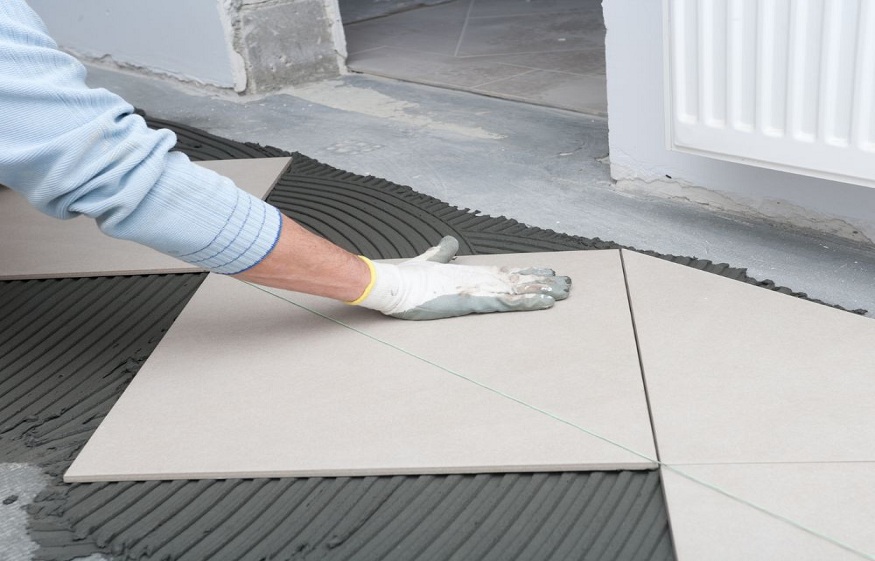Unless you are a professional tiler, laying floor tiles can be a tricky job. And there are many common mistakes that can result in an unprofessional finish. However, just because tiling a floor is not the easiest job in the world does not mean you cannot do it yourself and be happy with the result.
Not Preparing the Subfloor
One common mistake people make when tiling a floor is to assume they can just start laying tiles without preparing the surface. You need to check if the floor is flat, and this can be done by using a long beam level. Place the level on the floor and check that the bubble in the window is between the vertical lines. If the floor is uneven, the bubble will tilt to the right or the left of the lines. If there are any dips larger than 3mm, you will need to level the floor.
Using a Trowel that is Too Big or Too Small
It is important to use the correct trowel for the tile that you are using. Large tiles require a deep layer of thin set, so it is important that you use a larger trowel with deeper notches. If your tile is less than 16 inches in size, you can use a half-inch trowel (the size of the notches). For tiles bigger than 16 inches, a trowel with a ¾-inch notch is better.
Using the Wrong Cutting Tool
Floor tiles can be expensive, so it is important to take care when cutting them. The experts at Devour Tools say that using a wet saw with the appropriate tile blades will make the job of cutting your tiles quicker and easier. There are also steps you can take to avoid chipping the tiles, such as placing tape over the tile as you cut and applying slow even pressure. When it comes to cutting porcelain tiles, which are harder than ceramic tiles, you will need to work even slower. As you near the end of the cut, hold both sides of the tile to prevent breakages.
Not Taking Care When Grouting
For a professional looking finish, it is important to take care when grouting. Choose the appropriate grout for the tiles you are using. When grouting in bathrooms or kitchens, it is best to choose waterproof grout that will be resistant to moisture, preventing the buildup of mold. Look for grout that is specifically designed for floor tiles. It is coarser than wall grout and ideal for larger gaps. You should follow the manufacturer’s guidelines as it may be necessary to leave the grout to rest before use. Furthermore, when applying grout to your tiles, do so slowly and evenly. Excess grout should be wiped from the tiles before it is allowed to set.
Not Having Enough Tiles
When buying tiles, you should always buy ten percent more than you need so as to account for damaged tiles and those that had to be cut. This means that you should measure the room to get the area. When you know the square footage of the room to be tiled, you should add an extra ten percent to that figure and then check how much coverage one box of tiles will give you. You can then work out how many boxes to buy. Not having enough tiles is a major mistake because the last thing you will want is to run out of tiles and find that the store does not have any more in stock.






More Stories
TYPES OF HARDWOOD FLOORING TO CHOOSE FROM